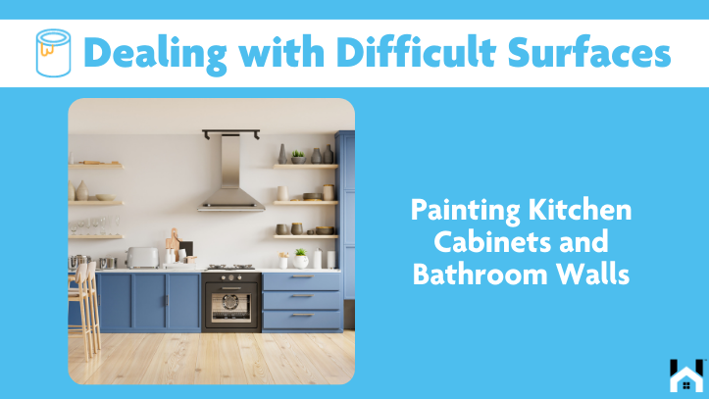Understanding Different Paint Finish Options
Selecting the ideal paint finish for your project requires a clear understanding of the various finish types available, including matte, satin, semi-gloss, gloss, eggshell, and flat finishes.
This knowledge is essential for achieving the aesthetics and performance you desire. Each finish impacts not only the aesthetic appeal and visual effect of your walls but also their durability and maintenance needs.
For example, matte finishes offer a soft, subdued look, while gloss finishes create a reflective quality that can enhance lighting effects. Therefore, the decision regarding paint finish is a significant consideration in your interior design strategy.
Explanation of Matte Finish, Satin Finish, Semi-Gloss Finish, and Other Finishes
Matte finish, satin finish, semi-gloss finish, and gloss finishes each have unique purposes in painting projects, offering varying sheen levels and functionality that cater to different aesthetic and practical needs.
Matte finishes are excellent for concealing surface imperfections on walls. They provide a velvety texture finish that absorbs light, making them particularly suitable for low-traffic areas like bedrooms or studies.
On the other hand, satin finishes find a harmonious balance between matte and glossy finish. They create a soft sheen that reflects light reflection, making them ideal for living rooms and hallways where finish durability is also a consideration.
Semi-gloss finishes are recognized for their higher sheen characteristics and enhanced washability, which makes them a preferred choice for kitchens and bathrooms, where moisture resistance is essential. Conversely, gloss finishes offer the highest sheen, finish durability, and exceptional durability.
They are often applied to trim and cabinetry for a sleek and striking appearance, though they require more maintenance due to their tendency to highlight imperfections.
Understanding these differences can significantly impact both the style and functionality of your painting project.
Factors to Consider When Choosing a Paint Finish and Paint Selection
Selecting the appropriate paint finish involves thoughtful design considerations of various factors. These include the intended use of the room, the lighting conditions, the desired aesthetic preferences, and the maintenance requirements.
Each of these elements plays a crucial role in determining the overall success of your paint project.
Room Usage, Lighting Impact, and Paint Performance
The specific function of a room and the available lighting impact significantly impact the type of paint finish one should choose. These factors influence both the aesthetic appeal and the functional paint performance.
For example, bathrooms typically require moisture-resistant finishes that can handle humidity, making semi-gloss finish or satin finishes ideal due to their finish durability and easy cleaning. In contrast, bedrooms may benefit from a matte or eggshell finish, which fosters a warm, inviting atmosphere, particularly in areas that receive ample natural light.
Additionally, the interaction between artificial lighting and paint color can guide your choices. A glossy finish in a well-lit dining room can beautifully reflect light, enhancing the overall elegance of the space, while a soft, low-sheen finish might provide a cozy and intimate setting in a den or reading nook.
By understanding these nuances, one can create a design that aligns seamlessly with both the intended function of the space and the desired aesthetic.
Desired Aesthetic Preferences and Finish Maintenance
When selecting a paint finish, it is important to consider both the desired aesthetic preferences and the finish maintenance requirements. Different finishes provide varying sheen levels and finish durability, which can significantly influence the room ambiance and upkeep of your space.
For example, high-gloss finishes can enhance architectural details and reflect light beautifully. However, they also tend to highlight imperfections and require regular cleaning to keep them looking pristine. Conversely, matte finishes can create a relaxed and inviting atmosphere, but they often absorb stains more readily, resulting in the need for more frequent touch-ups.
Finding a harmonious balance between visual appeal and practical considerations is essential. Choosing the right finish not only elevates the overall design but also ensures that maintenance remains manageable, allowing for a beautifully curated and functional environment.
Pros and Cons of Each Paint Finish and Finish Comparison
Each paint finish presents its own unique finish advantages and disadvantages, affecting factors such as finish durability, coverage, cost, and maintenance.
By understanding these elements, you can make a well-informed decision for your painting project.
Durability, Coverage, Cost, and Paint Quality
When evaluating paint finishes, it is crucial to consider how finish durability, coverage, and cost influence your final paint selection, as these factors can significantly impact both the initial investment and the long-term performance of your paint job.
The longevity of a finish plays a vital role in determining how often touch-ups or complete repaints will be necessary, which directly affects both time and financial resources.
Different finishes provide varying levels of protection against wear, stains, and environmental factors, which, in turn, dictates the amount of maintenance required over time. Additionally, the initial coverage offered by specific types of paint can influence both the quantity purchased and the number of coats needed, thus affecting overall costs.
Investing more upfront in a premium product may lead to savings in maintenance efforts, thanks to its superior durability and coverage; this can ultimately result in a more cost-effective solution in the long run.
Tips for Applying Different Paint Finishes and Paint Application Tools
Successfully applying various paint finishes involves a thoughtful blend of thorough surface preparation, effective application methods, painting techniques, and the right paint application tools.
This combination is essential for achieving a smooth, professional-looking result.
Preparation, Paint Testing, and Techniques for a Smooth Finish
Achieving a smooth finish begins with careful surface preparation and the application of effective painting techniques and paint testing. This approach ensures that the final appearance is not only visually appealing but also finish durability.
This process encompasses several important steps that should not be overlooked.
- First, it is essential to thoroughly clean the surface to eliminate dust, grease, and any remnants of old paint, as these can impede proper adhesion.
- Next, priming the surface is crucial, especially for materials such as wood or metal that tend to absorb paint unevenly. Selecting the right primer not only enhances adhesion but also creates a uniform base for the topcoat.
- Regarding applying various finishes—whether matte, satin, or gloss—using the appropriate tools, such as brushes, rollers, or sprayers, can make a significant difference in the outcome.
- Techniques like back-brushing can help achieve an even application, and maintaining a consistent technique across the surface will contribute to the desired smoothness.
Ultimately, by understanding these steps and having the right materials readily available, one can ensure a finished product that will endure over time and align with finish recommendations.





